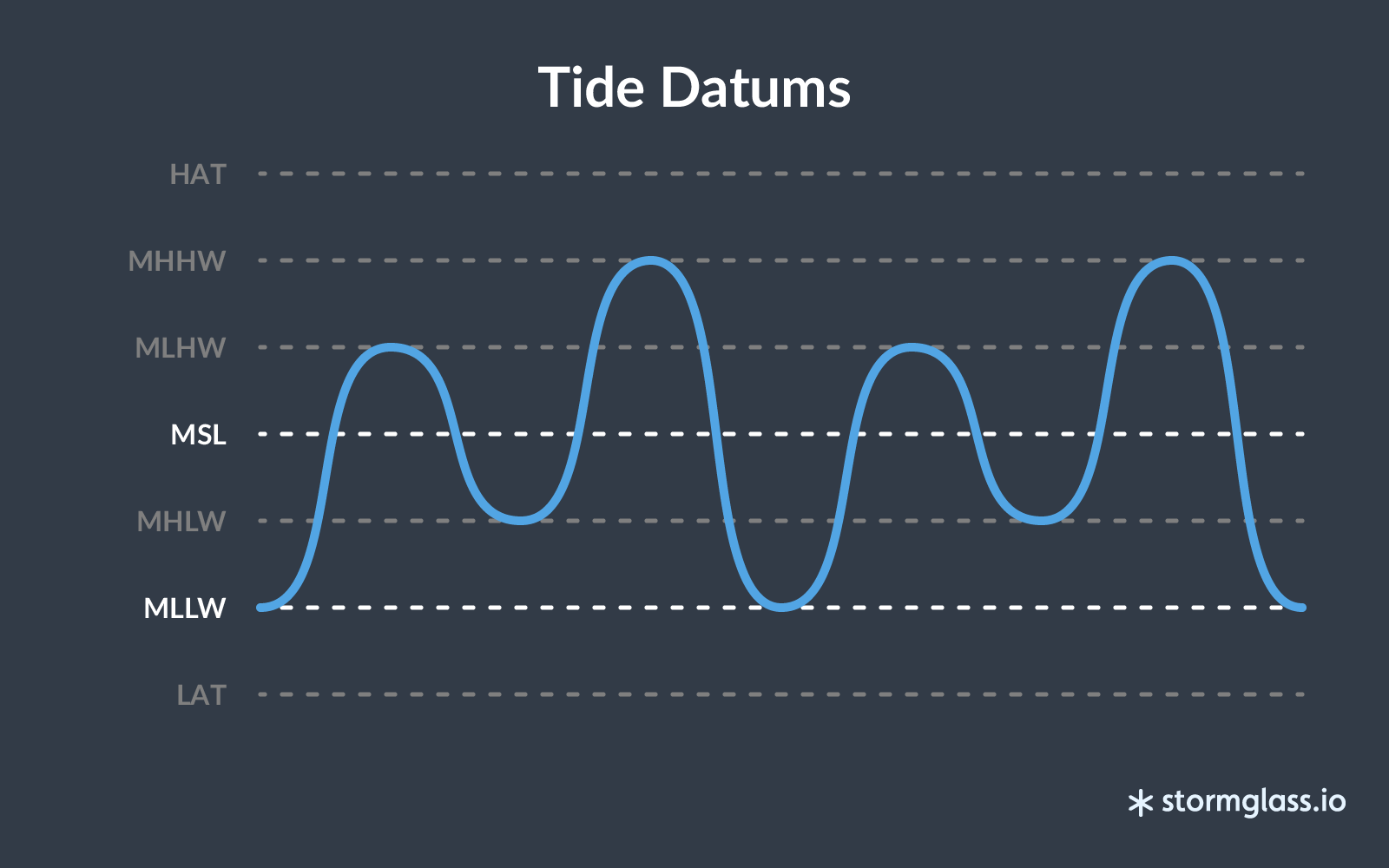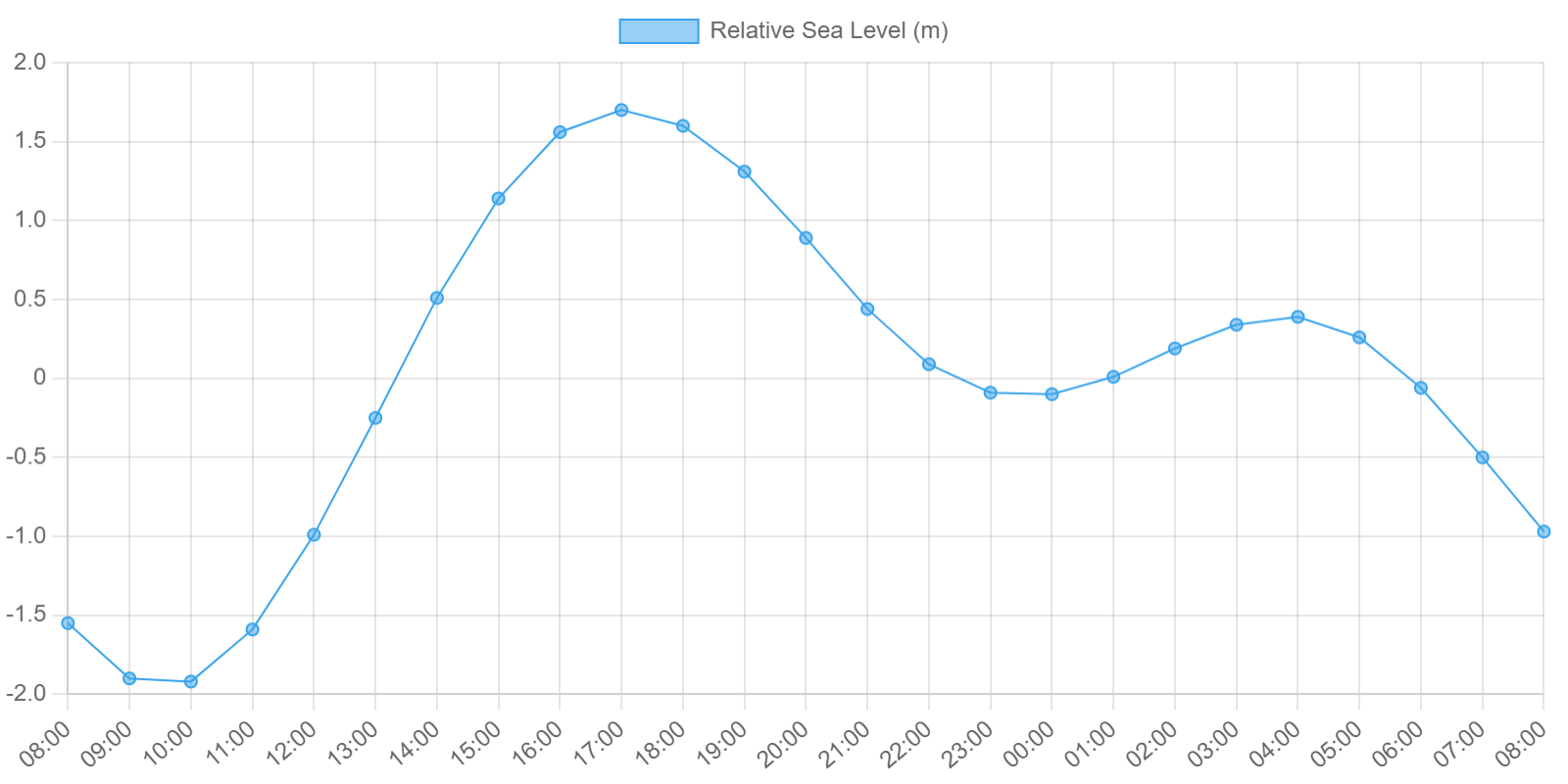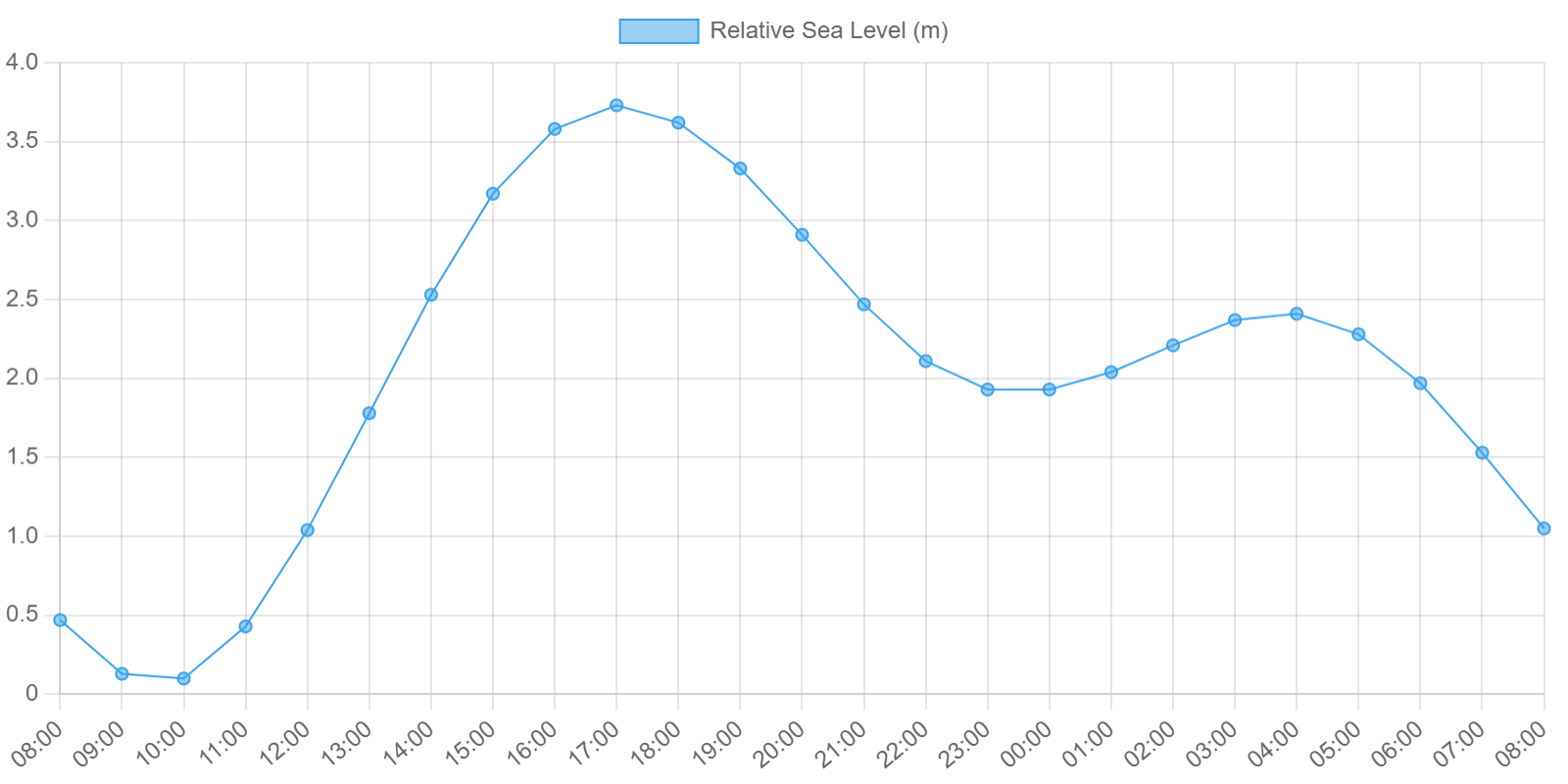Tidal Datum?
One of the most common sources of confusion when it comes to tide forecasting is Tidal Datum. So, what exactly is tidal datum, and why is it important? Let’s clear this up once and for all!
A tide forecast shows how the sea level changes throughout the day, indicating the times of high and low tide. If you’re only concerned about the timing of these tides, you might not need to worry about the tidal datum. However, if you’re looking at the actual sea level in meters – how much the water rises or falls – understanding tidal datum becomes essential. It’s the baseline or reference point against which sea level measurements are made.
In short: the Tidal Datum is the reference level when measuring local water levels.

Why is it important to pay attention to the Tidal Datum?
Below are two charts visualizing the sea levels (in meters) for Seattle, WA for the local date 2024-01-01 (UTC). The first chart shows the sea level relative to MSL (Mean Sea Level), and the second one relative to MLLW (Mean Lower Low Water).
Although high and low tides occur at the same times in both charts and the actual curves are identical, the sea level values differ significantly (pay attention to the scale on the Y-axis). For example, at 17:00, high tide is around 1.7m relative to MSL, but it’s 3.75m relative to MLLW. This is why knowing the tidal datum used is critical – you don’t want to compare forecasts using different datums and misinterpret the data.
Tidal Datum – MSL (Mean Sea Level)

Tidal Datum – MLLW (Mean Lower Low Water)

What Tidal Datums are supported in the stormglass.io API?
In most cases, Mean Sea Level (MSL) is the most useful tidal datum, and that’s why it’s the default setting in the Stormglass.io API. This datum shows how much the sea level deviates from the average sea level over time.
In some instances, it is more useful to adjust the data in a way that allows one to quickly determine the amount by which the sea level has risen from its average low level. For those instances we support the MLLW, or Mean Lower Low Water, datum. The desired datum is easily specified through the datum parameter which the stormglass.io API reads and uses to automatically adjust all values for you.
Ready to dive into tide forecasting and see how our API can simplify your tidal data needs? Sign up for free and give our Tide API a spin.
